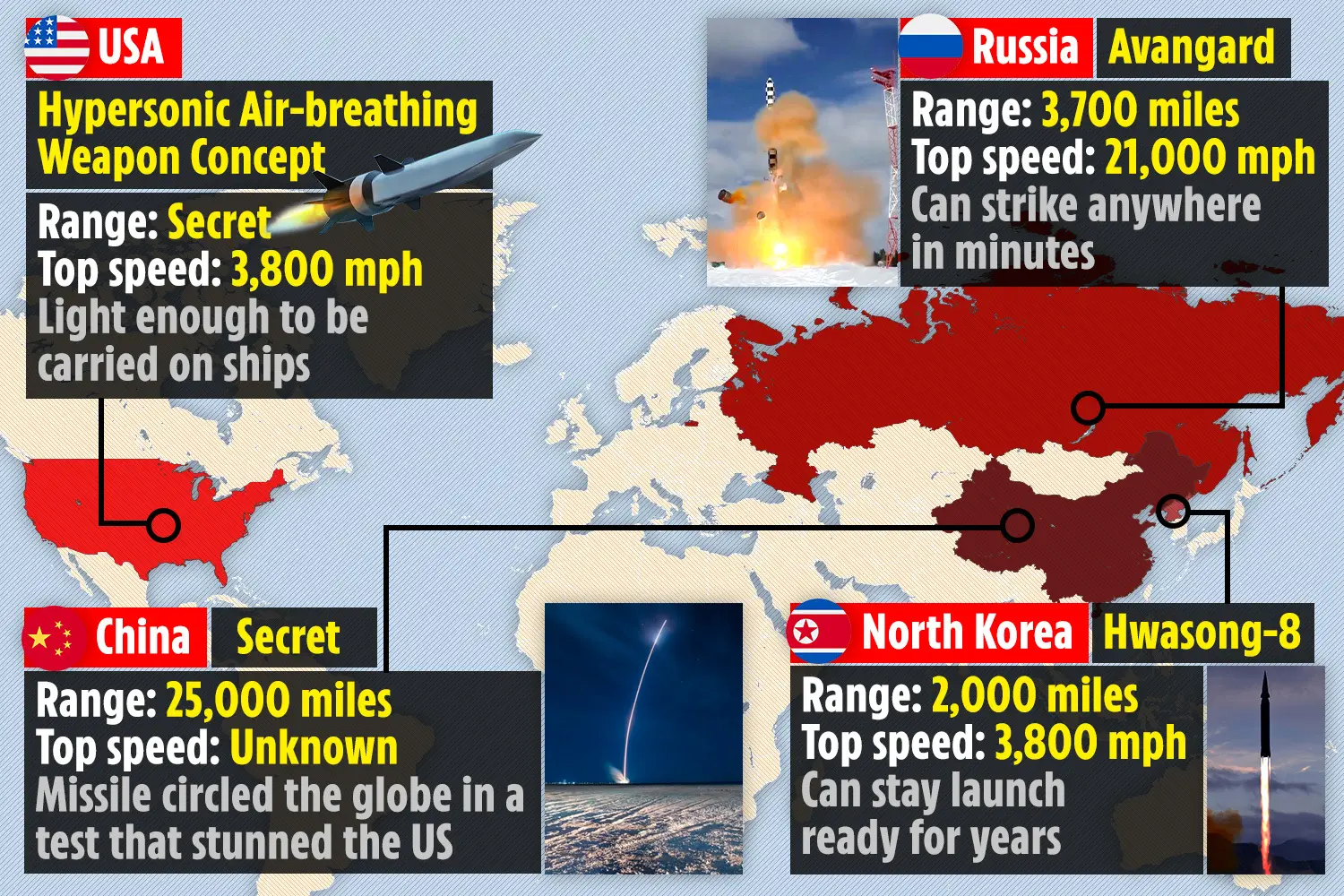By Lt Gen Dr. Anil Kapoor
Three Russian MiG-31 fighters with “Kinzhal” hypersonic missiles arrived at the Chkalovsk air base in the Baltic Sea as part of additional measures of strategic deterrence was a major announcement this week by Russia battered by guerilla tactics of Ukrainian forces in Crimea.
Since Wright Brother’s powered flying machine in 1903, the odyssey of the quest for speed continues. The sonic sound barrier was broken on Oct 14, 1947, by Maj Chuck Yeager flying the Bell X-1 rocket followed by a US WAC Corporal sounding rocket to become the first object of human origin to go hypersonic.
The Challenge of Hypersonics
Hypersonic systems fly at a speed above ‘one mile per second’, or five times the speed of sound i.e. 5 Mach. The challenges of breaking the hypersonic sound barrier are immense. At hypersonic speeds, the air molecules that envelope the flight vehicle change, break apart and gain a charge in a process called ionization.
This subjects the hypersonic vehicle to “tremendous” stresses as it pushes through the atmosphere generating a massive heat flux.
In fact, hypersonic systems, aircraft or missiles, presents a complex set of engineering and support system technological challenges – scorching heat of over 1100 degrees, advanced materials for structural strength to withstand extremely high temperatures and hence, the need for thermal management, propulsion systems to sustain speeds, guidance, and control systems to meet the stringent accuracy of these strategic weapon systems.
These are in addition to the standard design and development complications of missile systems of form factor space management, miniaturization, sophisticated power management, lightweight, and dynamic stability missile systems.
Why Hypersonics?
Combat aircraft and missile systems are ruggedized to meet the rigorous vagaries of the battlefield and governed by four competing requirements – maneuver, protection, stealth, and firepower. The governing Key performance indicator (KPI) is survivability. High mobility is considered inherent protection.
Hypersonic weapons are fast, agile systems designed to beat any ballistic missile defense by sheer speed and maneuvering. While aircraft have an inherent human limitation of 8G maneuver, missiles can maneuver beyond 20G based on the structural strength.
Yet another potential use of HGV is for Intelligence, Surveillance, and Reconnaissance (ISR) through the technologies to capture and display information at that speed are still under design and development.
The major advantage of hypersonic systems is that detection of these missiles and glide vehicles is a challenge. A series of space-based surveillance devices would be required to be able to detect and track- a technology that is still an R&D challenge.
The Hypersonic Platforms
Hypersonic platforms are two main types – glide vehicles and cruise missiles. The former is a preferred vehicle since these are launched from a rocket before gliding to their target and obviate the challenges of achieving hypersonic propulsion of missiles.
Viewing from the technology lens, the first big ticket is the propulsion system. The hypersonic propulsion system may comprise solid or liquid propellants or a combination or a dual combustion ramjet for configuring a precise control system. The critical design parameters hinge around the propellant design and nozzle design. Rare earth coatings like platinum are imperative for imparting structural integrity to the nozzles for enhanced performance under extreme thermal and mechanical stresses.
There is a tradeoff between the explosive payload and propulsion to balance out the range with the terminal effect. The all-up weight needs a very balanced optimization.
The guidance control system is the brain of the missile system comprising of an onboard computer, an inertial measurement unit (IMU), and control surfaces for precision and positioning of the missile accurately as it maneuvers to the target.
This is the crux of the hypersonic hype.
An extremely agile missile system, with high technology, and high cost, is difficult to defeat, and must be accurate to be effective at the target end. The hypersonic glide vehicle and hypersonic missile are programmed for precise positioning on high-value targets.
But the moot question is how much payload can be delivered? Is it 500 kg, 1000 kg, or more?
Global Hypersonic Scenario
The hypersonic arms race is gaining traction, in long-range Hypersonic Cruise Missiles and Hypersonic Glide Vehicles (HGVs). An HGV riding on an intercontinental ballistic missile (ICBM) could become a disruptive technology in strategic targeting.
China has made rapid progress in hypersonic glide vehicles and missiles. They have conducted a number of successful tests of the DF -41, an ICBM, and DF-17, a medium-range ballistic missile (MRBMs), designed to launch hypersonic glide vehicles capable of carrying varied warheads. In fact, the Chinese Hypersonic glide vehicle DF-ZF can be fitted on a number of ICBMs and MRBMs for effective strategic target engagements. DF-ZF has a low trajectory making detection nearly impossible.
Russia has three Hypersonic Weapon Platforms – “Avangard” the hypersonic glide vehicle, “Kinzhal” a hypersonic air-launched ballistic missile system, and “Tsirkon” Hypersonic Cruise Missile.
The USA has been under peer competition from China and Russia to develop hypersonic technologies.
Defense Advanced Research Projects Agency (DARPA) Projects on air-launched cruise hypersonic missiles is in progress and $15 billion are reportedly pledged for the 2015 -2024 development window.
Global Cooperation
Feeling the heat of competition with China and the high costs of R&D, AUKUS – a grouping comprising the UK, USA, and Australia has adopted a consortium approach. They are cooperating on ‘hypersonics and counter-hypersonics’ as part of their security pact to develop higher performing and affordable systems.
India on the Sonic Cruise
Given the geopolitical importance of India in the Indian Ocean Region (IOR) and in the Indo-Pacific, the challenges for India ahead are many.
Indian Hypersonic Missile Program comprises a Hypersonic Technology Demonstrator Vehicle (HSTDV) – an HGV, “Shaurya” Hypersonic Missile, an aero-ballistic missile “Rudram 3,” and the “BrahMos II” from the bouquet of the Indo Russian Joint Venture of the BrahMos Missile System akin to Hypersonic Cruise Missile Tsirkon of Russia.
Surely, a resurgent “Aatmanirbhar” India is in takeoff mode.
Speed Travel on Earth
Hypersonic Technologies have been in news since time immemorial in space missions. Competition in the peaceful tech race to Mars and outer space exploration and travel is now extending to faster inter-continental travel. Extensive research on supersonic and hypersonic speed travel is underway on how to dampen the effects of crossing a series of sound barriers to create a comfortable passenger experience.
Remember, the Supersonic British Airways-Air France Concorde flights gave speedier travel a maiden venture till it was discontinued on rising maintenance cost.
There is hope that Elon Musk’s SpaceX Hypersonic Dreamliner would take 39 minutes from New York to Shanghai and 29 minutes from London to Dubai – an ambitious dream, at present.
The Next Disruption in Avionics
Hypersonic Eco System is the next disruption in aircraft design and missiles. The intent is to produce less expensive and affordable technologies to launch, guide aerial hypersonic platforms, tech stack to collect collate and display real-time ISR actionable info for military use and have safer hypersonic designs for comfortable travel as civilian use.
However, given its exorbitant cost, the hypersonic call is a combination of national political will, technology thresholds, and economy of scales of the nation but a real game changer for sure.
It sure has the contours of neighbor’s envy and owner’s pride.

(Lt Gen Dr. Anil Kapoor, AVSM, VSM superannuated from the Indian Army as Director General Electronics and Mechanical Engineering (DGEME) and Director General Information Systems (DGIS). He is an expert in Radars, Guided Missiles, MRO asset management, and condition-based monitoring of assets.)
==
Disclaimer: The views expressed are not necessarily those of The South Asian Times










